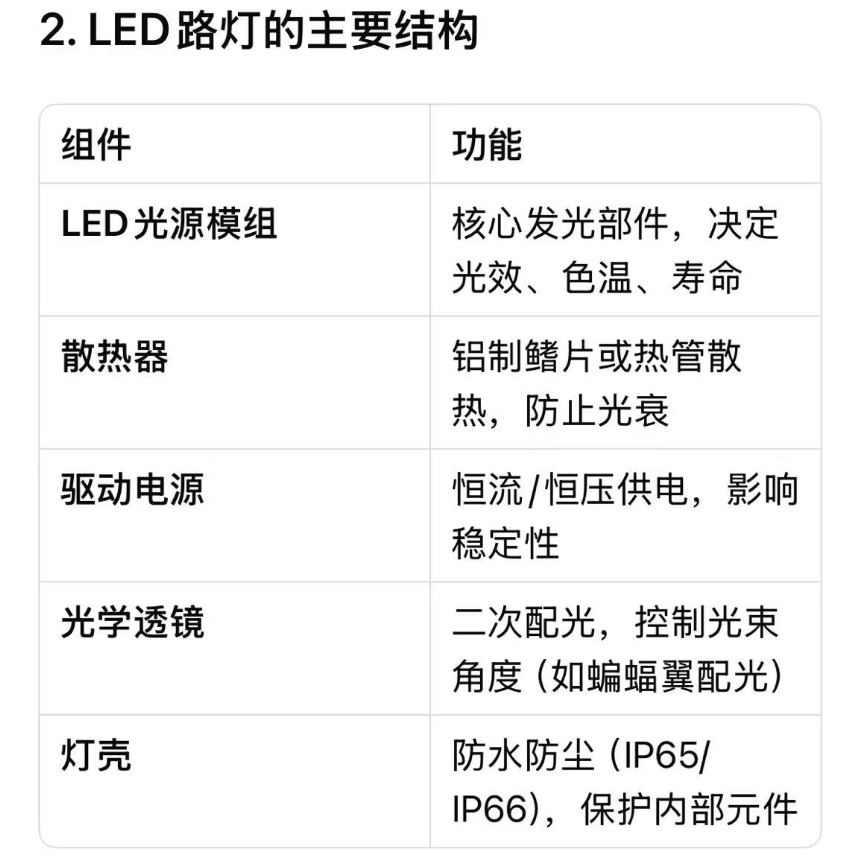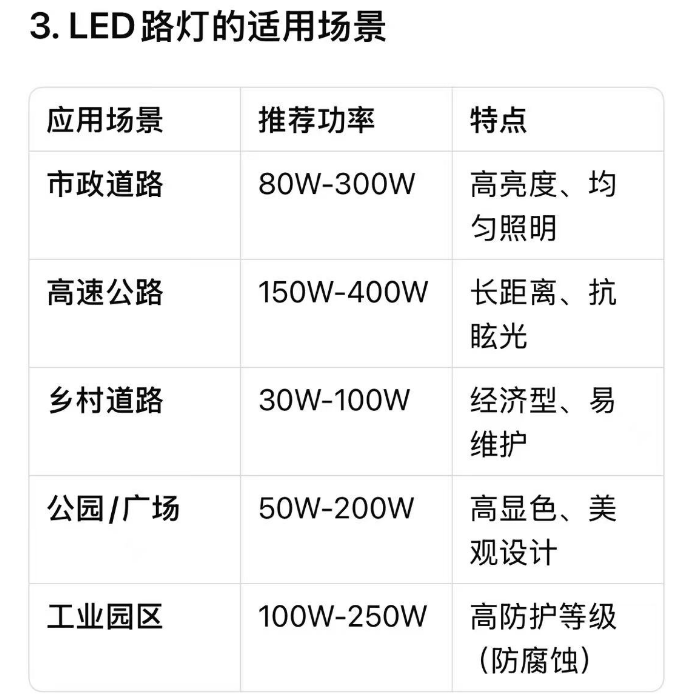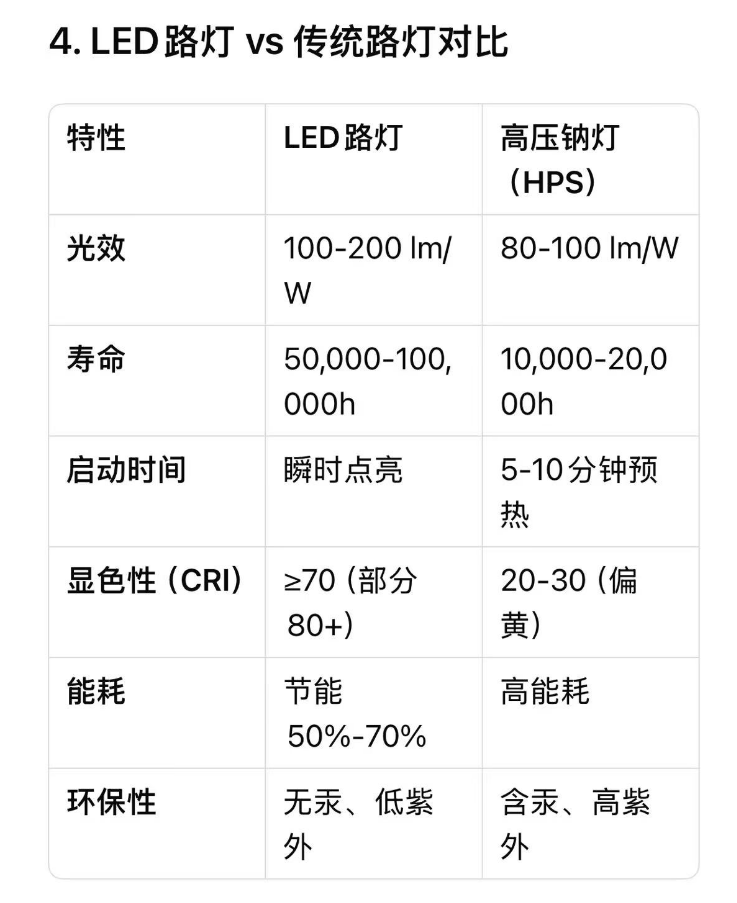LED Street Light (Light Emitting Diode Street Light) is a modern road lighting device that uses LED light sources. Compared with traditional high-pressure sodium lamps (HPS), metal halide lamps (MH), etc., it has the advantages of high efficiency, energy saving, long life, and environmental protection. It has become the mainstream choice for outdoor lighting in municipal, highway, park and other areas around the world. (1) Efficient and energy-saving
High luminous efficiency: up to 100-200 lm/W (traditional sodium lamps only have about 80-100 lm/W), with lower power consumption under the same brightness.
Intelligent dimming: supports PWM dimming, MPPT efficient charging, timed dimming, radar sensing, etc., further reducing energy consumption.
(2) Ultra long lifespan
LED chip lifespan: 50000-100000 hours (approximately 10-15 years), much higher than the 10000-20000 hours of sodium lamps.
Low maintenance cost: LED light sources are not easily damaged, reducing replacement frequency.
(3) Environmental protection and safety
Mercury free: Free from heavy metals and compliant with RoHS environmental standards.
Low UV radiation: reduces light pollution and has low attraction to insects.
(4) High Color Rendering Efficiency (CRI)
CRI ≥ 70 (some high-end products can reach 80+), close to natural light, improving nighttime road recognition.
(5) Seismic and impact resistance
Solid state light source design, no filament or glass parts, suitable for harsh environment (such as typhoon, rainstorm area).



5. Mainstream LED street light types in the market
(1) Classified by installation method
Single arm street lamp (conventional road)
Dual arm street lamp (wide road)
High pole lights (plaza, highway service area, 15-40 meters)
(2) Classified by power supply method
Solar powered LED street lights (off grid application, paired with photovoltaic panels and batteries)
Wind solar complementary street light (wind and solar hybrid power supply)
Complementary street lights for urban electricity supply
(3) Classified by intelligent functions
Intelligent dimming street light (automatically adjusts brightness according to traffic flow)
IoT street lights (remote monitoring, fault alarm)
5G smart street lights (integrated with 5G base stations and environmental monitoring)
6. Key parameters for selecting LED street lights
Luminous flux (lm): brightness, such as 30000lm ≈ 200W LED street light
Color temperature (K): Warm light (2500-3000L) Warm white (3500K-4500K) or regular white (5000K-6500K)
Protection level (IP): IP65 (dustproof and waterproof) or above
Power factor (PF): ≥ 0.95 (high-efficiency power supply)
Warranty period: usually 3-5 years (5-10 years for high-end brands)
Summary: LED street lights, with their advantages of energy saving, long lifespan, and high brightness, have gradually replaced traditional street lights and played an important role in the construction of smart cities.





